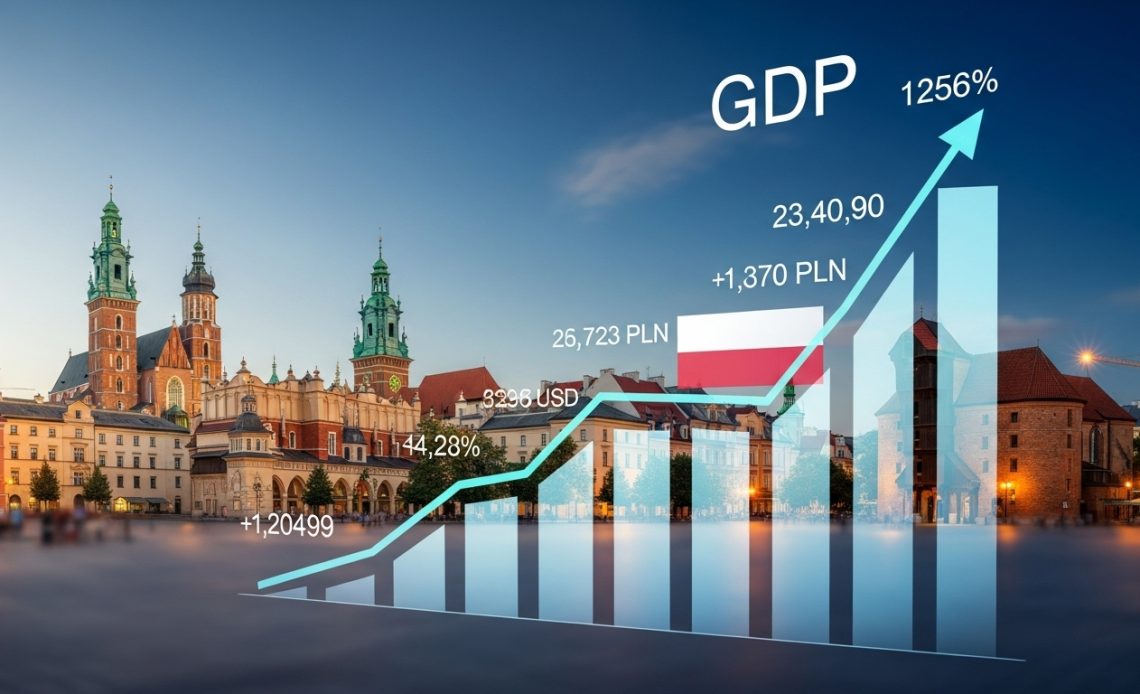
Poland’s economy has experienced notable changes over the last ten years, marked by steady expansion, unexpected disruptions, and resilient rebounds. From pre-pandemic growth to post-crisis recovery, the country’s GDP trajectory offers valuable insight into its economic strength and adaptability.
2015–2019: Years of Steady Expansion
Between 2015 and 2019, Poland’s GDP grew consistently, increasing from around $1.80 trillion to $2.29 trillion. Annual growth rates during this period ranged between 4% and 6%, with standout performances in 2018 (5.9%) and 2019 (4.5%).
This expansion was supported by strong domestic demand, robust exports, and continued integration within the European Union’s economic framework.
2020: Pandemic-Induced Contraction
The COVID-19 pandemic brought the first significant setback in years. In 2020, Poland’s economy contracted by –2.0%, with GDP falling to approximately $2.34 trillion. Lockdowns, disrupted supply chains, and a slowdown in global trade all contributed to the decline. Despite this contraction, Poland fared better than many other EU economies, thanks to relatively short restrictions and quick adaptation by businesses.
2021–2022: Strong Economic Rebound
The recovery was swift. In 2021, Poland’s GDP grew by 6.9%, followed by another strong year in 2022 with 5.3% growth. GDP surpassed $3.1 trillion in 2022, fueled by renewed consumer spending, increased investment, and government stimulus measures. This rebound positioned Poland as one of the EU’s fastest-growing economies during the post-pandemic phase.
2023–2024: Growth Slowdown
Economic momentum slowed in 2023, with growth dipping to 0.2% amid global inflation, energy price volatility, and weaker external demand. However, 2024 brought a recovery, with GDP expanding by 2.9% to reach approximately $3.62 trillion. The focus shifted toward stabilizing inflation and supporting sustainable growth.
2025 Outlook: Moderate and Sustainable Growth
For 2025, forecasts indicate a real GDP growth rate of around 3.2%, pushing GDP close to $3.89 trillion. While slower than the post-pandemic rebound, this pace reflects a more sustainable trajectory in line with global economic conditions. Key drivers are expected to include infrastructure investments, technological development, and a steady flow of EU funds.
Key Takeaways from the Last Decade
- Resilience in Crisis: Poland’s quick rebound after 2020 highlights the flexibility of its economy.
- Steady Long-Term Growth: Despite temporary slowdowns, the overall trend remains positive.
- Shifting Challenges: Inflation control, energy transformation, and global market uncertainty will shape the next phase of growth.
Source of the data: https://bnbn.pl


